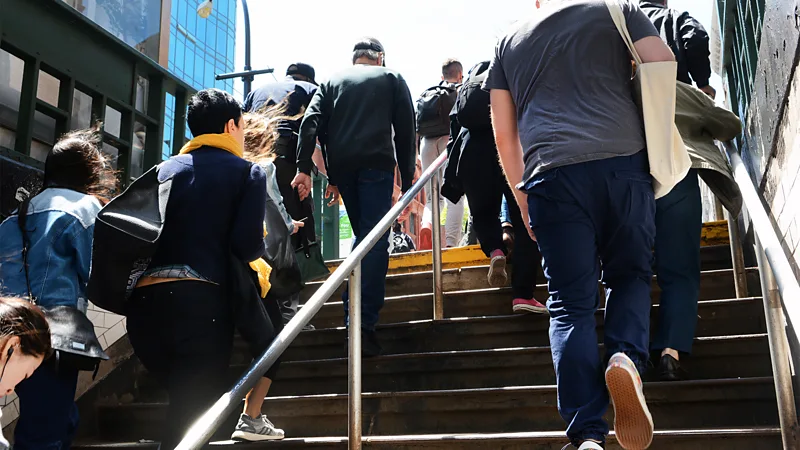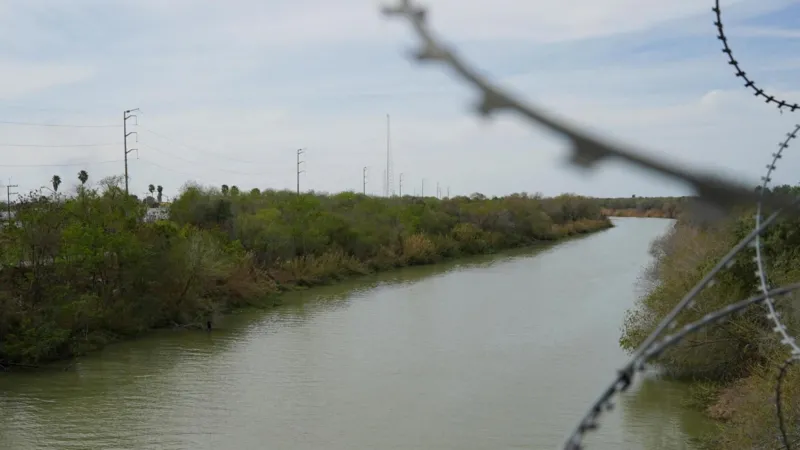Will flights really reach net zero by 2050 - and at what cost to passengers?

It is the perfect start to a holiday: your plane ticket is cheap, your cabin baggage is safely stowed, the engines are roaring into life - and the pilot has announced that there’s no need to worry about the environmental impact.
This is Jet Zero, a vision where air travel is entirely carbon neutral thanks to new technology and green ventures that offset the environmental impact. The plan was drafted in 2022 when Boris Johnson was prime minister, marking a step towards the government’s legal obligation to reach net zero by 2050. The Labour government has since made a similar pledge, and in addition it wants all domestic flights and UK airport operations to reach zero emissions by 2040.
This is no easy feat when you consider the scale of the challenge: one passenger taking an economy-class flight from London to New York generates 309kg of carbon dioxide, which would take roughly a year to absorb via 10 mature trees.
Multiply this on the global scale and the aviation industry would need to plant roughly 100 billion mature trees each year to offset its emissions. For UK emissions alone you’d need a forest almost the size of Wales.
So, just how realistic is the plan to hit Jet Zero by 2050? And what is the knock-on cost for passengers?
Earlier this year, Anthony Browne, who was the aviation minister in the Conservative government at the time, said that he thought any increase in ticket prices would be “marginal”.
“We don't think the difference will be noticeable to most consumers,” he said.
But some experts claim that politicians are not being realistic. Sir Dieter Helm, professor of economic policy at the University of Oxford, argues that there “definitely would be higher cost”.
“Governments desperately don’t want to tell people they’re going to have to pay for what they do.”
But ultimately, the cost depends on which methods are employed to cut or reduce emissions.
From sharklets to UltraFans
The previous government said that it aimed reach Jet Zero by focusing on "the rapid development of technologies”, as well as operational improvements and - among other things - more sustainable fuel types.
This is not an entirely new quest. Aircraft around the world have been steadily getting cleaner since 1969 when the first high-bypass turbofan engines were used on the new Boeing 747 aircraft. In the years since there have been other innovations including sharklets, or upturned wing tips on modern planes that reduce drag and save, on average, 4% of fuel per trip.
More developments are in the pipeline, including a new type of jet engine, developed by Rolls Royce, called the “UltraFan”, which will reduce average fuel consumption by 10%.
“Because it’s a gearbox, the turbine can run very fast, much more efficiently, the fan can run slower and be much bigger,“ explains Simon Burr, a director at Rolls-Royce.
The problem is that, though it was first tested in 2023, it’s unlikely to be available on commercial aircraft until the 2030s because of production lead times - and even then, a 10% improvement is impressive but not a game changer.
Aviation’s CO2 emissions come primarily through jet engines using carbon-rich fossil fuels, which produce CO2 when burned, so there have been attempts to create an alternative type made from renewable biomass and waste resources, known as Sustainable Aviation Fuel (SAF).
The first SAF flight ran between London and Amsterdam in 2008 using fuel derived from a mixture of Brazilian babassu nuts and coconuts.
Now the British government says that 22% of all jet fuel from UK aviation has to come from sustainable sources by 2040. But this comes with further challenges.
In the UK, SAF is mainly made from cooking oil, some of which is shipped from Asia, and shipping is responsible for 2% of global CO2 emissions.
 Getty Images
Getty ImagesAlternative methods of creating SAF require large quantities of electricity as part of the manufacturing process. This would involve a vast amount of renewable energy to make it sustainable.
"It's very hard, to think there is such a thing as a sustainable aviation fuel,” says Sir Dieter Helm. “There are aviation fuels that are less polluting than the ones being used at the moment, and you can use elements of biofuel and chip fat and so on.
"Think about the scale that's required to do it.”
Remapping the sky
There is another more unexpected way that airlines could reduce emissions. That is, making their flight paths more direct to reduce fuel consumption.
Currently most planes fly on routes determined by a network of beacons, many of which were put in place decades ago. As a result they don’t always fly by the shortest route, but "airspace modernisation", as it is known, will allow for straighter paths to destinations.
Satellite technology is required to do this: aircraft flying over the Atlantic used to have to fly at least 40 miles apart, but the satellite technology means that aircraft can in theory fly as close as 14 miles apart, allowing more aircraft to fly on the direct flight paths.
The Jet Zero Strategy estimates that this, together with other fuel efficiency improvements, could cut emissions by as much as 15% by 2050.
But the National Air Traffic Services (NATS), which control most flights in and out of England and Wales, caution that these changes are neither easy nor quick. “It's a very, very complicated thing to do,” warns Chris Norsworthy, director of future planning.
“The national infrastructure change of this type takes many years. The deployments we've made already are years in the making.”
The electric plane race
Hidden away in a mini aircraft hangar of sorts, just outside Bristol, inventor Stephen Fitzpatrick has spent seven years working on a pioneering aircraft that could be the basis of another solution. His carbon fibre creation, known as VX4, has eight propellers and looks like a giant drone, but what's crucial is that it doesn’t use fuel. Instead it is powered by lithium-ion batteries similar to those in electric cars.
The batteries alone weigh 800kg, which brings the first challenge: the sheer weight limits how far it can fly.
Mr Fitzpatrick says the VX4 will have a range of around 100 miles to begin with. “Each year the batteries that we use will improve... Over time, we’ll be able to develop a hybrid powertrain, probably using hydrogen fuel cells and batteries, and that will increase the range further.”

The prospect of replacing jet engine-powered long-haul flights is, however, remote. “There is no battery chemistry in the world that will give us the energy we need to take hundreds of passengers over the Atlantic,” he concedes.
Harnessing hydrogen in other ways may be a better bet.
The British-American aircraft company, ZeroAvia, says it expects to have an 80-seater powered entirely by hydrogen in the air within two to three years. Airbus is developing something similar.
Both are propeller planes, however, with limited speeds and ranges.
The pricetag for passengers
The reductions from SAF, fuel efficiency improvements and zero carbon aircraft will only cut aviation emissions by around a third, according to the previous government's estimates. So another part of the Jet Zero strategy involves a pricing scheme to charge airlines for CO2 emissions and carbon offsetting.
Airlines already pay a duty for each flight someone takes in the UK, a cost that is passed to passengers. In much of the UK (excluding Scotland) this adds £7 to each domestic flight, £14 to short-haul ones and £92 for long-haul. But carbon offsetting means paying another fee.
Some schemes have been highly controversial, with questions around how to prove how many trees have been prevented from being cut down.
Cait Hewitt, policy director at the Aviation Environment Federation, is concerned that the current informal offsetting projects may be counterproductive: “They could actually have made that problem a bit worse over time by giving consumers the false impression that the emissions from their flight [are] being cancelled out somehow by an offset.”
Duncan McCourt, chief executive of Sustainable Aviation, an umbrella group for UK airlines, airports, manufacturers and others in the business, is optimistic that removing carbon from flying won’t add much more than a few pounds to the cost of an airline ticket.
“We think we can do it while enabling people to continue to fly and continue to get that benefit of flying, such as connecting people, such as being able to go on holiday,” he says.
But the Jet Zero plan says nothing directly about the knock-on cost to passengers. Instead, it refers to “demand management”.
Sir Dieter Helm has his own take on what Jet Zero means for holidaymakers and fully believes that it will lead to higher costs. As for the likelihood of the government hitting its Jet Zero target on time, he is unconvinced of this too, but he also suggests that this may not be the point.
“It depends whether you think Jet Zero is… genuinely a target and they mean to achieve it. I'm really sceptical about the second.”
And now, the number of flights taken annually by people in the UK is projected to rise even further, translating into an additional 150 million more flights a year. So the scale of the government's challenge, which was large enough when it began, is only set to grow.
Source: BBC






















:max_bytes(150000):strip_icc():format(webp)/Health-GettyImages-ToothpasteOnAcne-4ea4cfedb2224b0fb601e61b59913d06.jpg)

:max_bytes(150000):strip_icc():format(webp)/Health-GettyImages-1884986319-66db20f6180d468f8183118af4d289ff.jpg)































